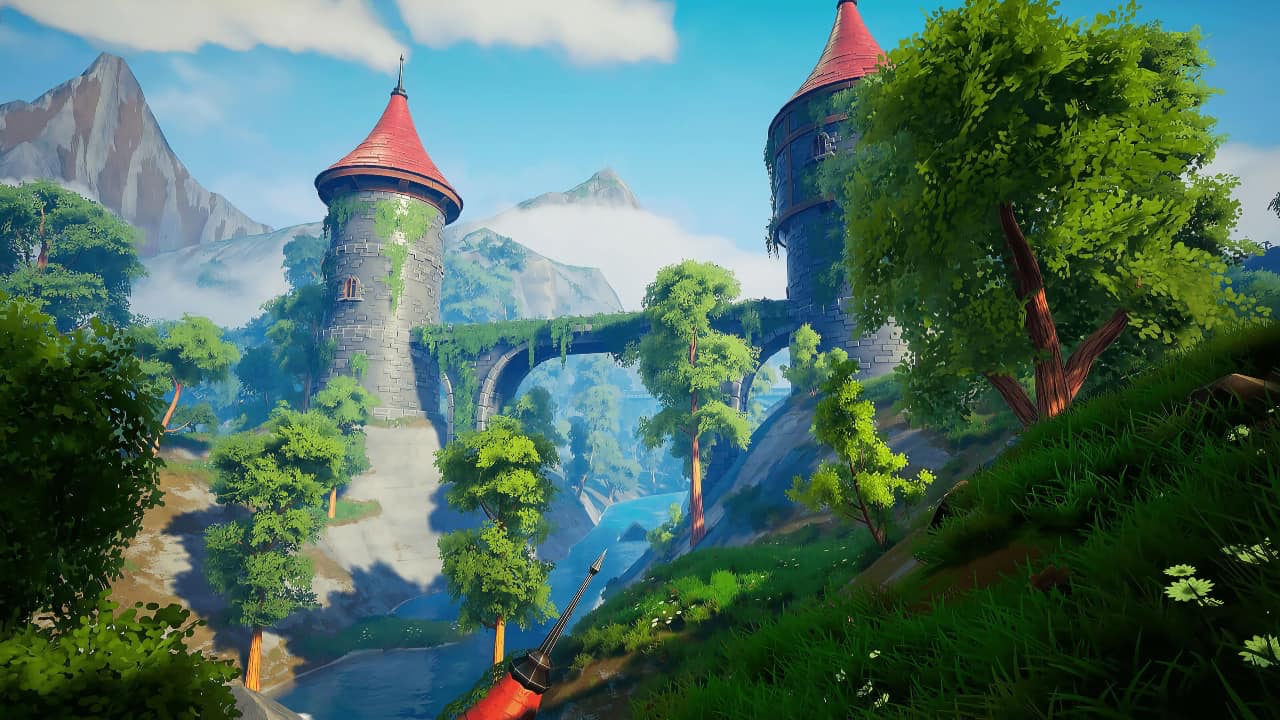
Epic Games recently released the 5.3 update to Unreal Engine with some impressive new features. Here are some of the highlights.
Let’s start with Geometry
Introduced with UE 5.0, Nanite brought high-detail geometry to the world of realtime 3D graphics. Epic has added explicit tangent support, which is at the cost of around 10% memory and disk space overhead for assets. This is intended primarily to help improve the detail and quality of low-poly geometry.
Nanite was one of the banner features of UE 5 when it launched, and since then, Epic added geometry streaming to enable very detailed geometry in Nanite-enabled actors. Now that support has come to landscape meshes. The editor is now able to import and partition huge landscape meshes, and the new LOD (Level of Detail) Groups feature enables LOD transitions across multiple landscapes within the group. Related is Hierarchical Generation, which enables world creators to control the detail level of procedurally generated content based on the grid size. That way, a procedural shader that creates a displacement map can be processed at a level of detail that matches its level of detail.
For example, build a rock shader that only renders displacements boulders on a faraway mountain, and as the camera gets close enough to the mountain to see smaller rocks, it will start generating those.
Rendering in UE 5.3
There are a lot of improvements in Lumen. Reflections can now support more than one bounce, making reflections truly realistic. When an actor in the game world moves something that is visible in a reflection, the reflection can show it moving just as in the real world. Lumen Reflections can be enabled even in applications using pre-computed light maps instead of Lumen Global Illumination.
Until UE 5.2, volumetric effects like fires and explosions were basically cards rather than three-dimensional volumes. Now, in Engine 5.3, there is experimental support for Sparse Volume Textures (SVT). Visual effects applications like Houdini added SVT in order to improve performance and reduce the overhead for computation and render heavy particle effects like explosion and fires, and now Epic has brought those to realtime applications.
Unreal's Path Tracer can now render imported VDB since Epic added the also currently experimental heterogeneous volume support. The Path Tracer also supports Substrate materials and can calculate its own depth pass, so it no longer depends on the rasterizer to calculate that. As a result, depth-based effects like bokeh will be more accurate and pleasing. Epic has also improved Unreal's subsurface scattering to reduce noise in renders without requiring more ray samples.
The aforementioned Substrate from 5.2 is still experimental but is continuing to grow and mature. In 5.3 it has a few new features like glints, fuzz, and specular profiles along with a bevy of bug fixes and performance improvements.
Virtual Shadow Maps (VSM) are now considered production-ready. Along with VSM is a new sampling algorithm called Shadow Map Ray Tracing (SMRT) to render more natural-looking soft shadows that can transition into hard-edged contact shadows. VSM are cached, but changes in lighting or geometry, such as deformation, will invalidate cached VSM pages, which will then be recalculated.
Though that adds overhead, that also leads to dynamic shadows, which is a huge improvement in realism from pre-computed shadow maps. As an optimization for large environments with predominantly static geometry and lighting, UE has a static VSM cache that is separate from the dynamic cache.
Hair is also enhanced. UE 5.3 has groom streaming support and experimental hair strands support. Though not yet there, this is a step toward dynamic hair grooming.
Though only a point release, the Unreal Engine 5.3 update has some big changes and updates. There are a lot of features that provide information to developers to help them optimize and troubleshoot scenes, support for a wider range of hardware, and a gaggle of bug fixes and optimizations.
As production rendering is getting faster and real-time rendering is getting more realistic, they are now at a point where they are almost within spitting distance of each other.
Here are some links for those that want to delve deeper.
Virtual Shadow Maps in Unreal Engine | Unreal Engine 5.3 Documentation
What's New | Unreal Engine 5.3 Documentation
Unreal Engine 5.3 Release Notes | Unreal Engine 5.3 Documentation
Tags: Technology


Comments